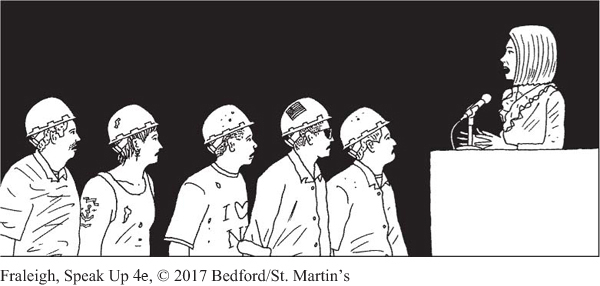Seeking Common Ground
Another way to analyze your audience is to look for common ground—beliefs, values, and experiences that you share with your listeners.10 Consider Jay, a student at a commuter school who gave a persuasive presentation to convince his listeners to use mass transit instead of driving to school. Like many of his listeners, Jay had spent his first year of college driving to school every day—
In some cases, you can communicate your perception of common ground nonverbally. For example, a candidate for national political office may don a cowboy hat while delivering a speech to voters in Texas or a sports cap from a local team. Of course, merely putting on a hat doesn’t necessarily mean you share actual common ground with your audience. Use this technique only if you feel a genuine sense of shared identity with your listeners, and then reinforce that authenticity by referring to common ground during your speech.


Page 142
For an example of verbally asserting common ground, see how this speaker uses the word “we” in the first minute of her speech: “Kim, The Non-